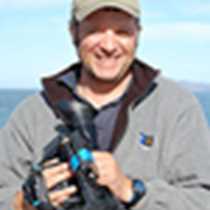It seems we have saved the best place for the last day. Located in the outermost region of the archipelago, Genovesa Island can be considered a jewel of the Galapagos. It is home to hundreds of thousands of seabirds of different kinds. Right now is the best time to see frigatebirds. Most males are showing their red pouches! The iconic red-footed boobies are the most prominent in this place. Most red-footed boobies are nesting too!
This flat and rocky island is still dry this time of the year. As a result of cooler water in the region, most sea birds are nesting. The population of red-footed boobies and frigatebirds nest in trees. The swallow-tailed gulls, Nazca boobies, and storm petrels nest on the ground, forming vast colonies all across the island. Either in the morning or late in the afternoon is when we can appreciate the best of Genovesa. Birds come back to the colony, chicks are fed, and the whole island happens to be a concert of sea birds!
Early in the morning we explored the crater cliffs from kayaks. Throughout our journey we spotted red-billed tropicbirds flying in circles looking for nesting sites, frigatebirds, Nazca boobies, and more. These vertical cliffs are home to large colonies of swallow-tailed gulls; some nest here and others find shelter after their long overnight voyages.
Later on we landed on the island to explore the shore with its colonies of great frigatebirds, Nazca boobies, red-footed boobies, and yellow-crowned night herons. The moment we reached the shore we were surrounded by sea birds, some on land and some in the air. A few yards away from the shore we reached a breeding colony of frigatebids with their red pouches inflated. It felt like a magical place!









